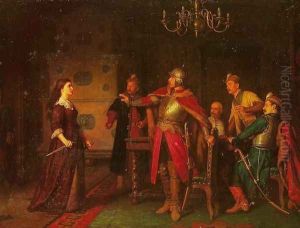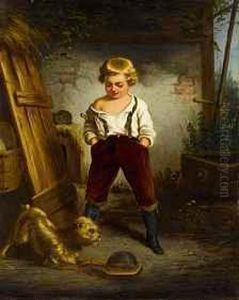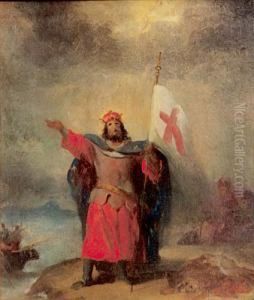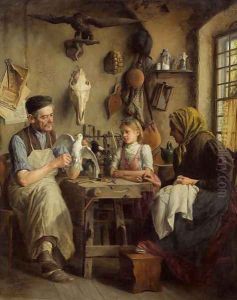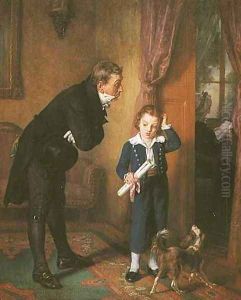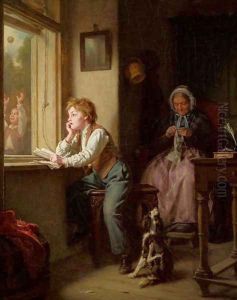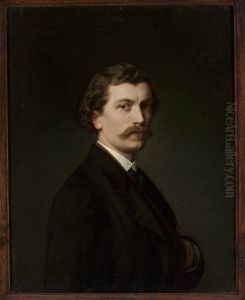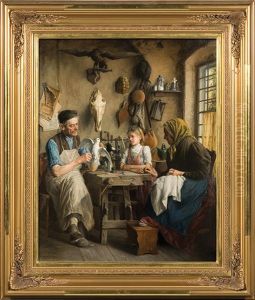Leopold Loeffler Paintings
Leopold Loeffler was a Polish painter, primarily known for his genre works and portrait painting. Born on November 1, 1827, in Warsaw, Poland, Loeffler showed artistic talent at an early age. He initially studied at the Warsaw School of Drawing, which was a precursor to the Warsaw Academy of Fine Arts. His early works were influenced by the Romanticism movement, which was prevalent throughout Europe during the mid-19th century.
Loeffler continued his studies abroad, which was a common practice for artists from Poland at the time. He spent time in Dresden, Paris, and Rome, which allowed him to absorb a variety of artistic styles and techniques. His experiences abroad enriched his painting style, and he became noted for his ability to capture the mood and atmosphere of a scene.
After returning to Warsaw, Loeffler became an active participant in the city's artistic community. He was involved in the January Uprising of 1863, a Polish national revolt against the Russian Empire, which influenced some of his subsequent work. His paintings from this period often depicted scenes of Polish life and historical events, which resonated with the national sentiment of the time.
Throughout his career, Loeffler received considerable acclaim for his portraits, which included Polish nobility and other prominent figures. His skill in this genre was marked by his nuanced approach to capturing the personality and essence of his subjects. Loeffler's genre scenes were equally praised, often featuring everyday life with a focus on folk customs, which aimed to preserve Polish cultural identity.
Leopold Loeffler's contribution to Polish art was significant, as he helped to document and celebrate Polish culture during a period of political turmoil. He passed away on May 4, 1898, in Kraków, Poland. Today, his works are part of various art collections in Poland and are studied for their historical and cultural value as well as their artistic merit.
